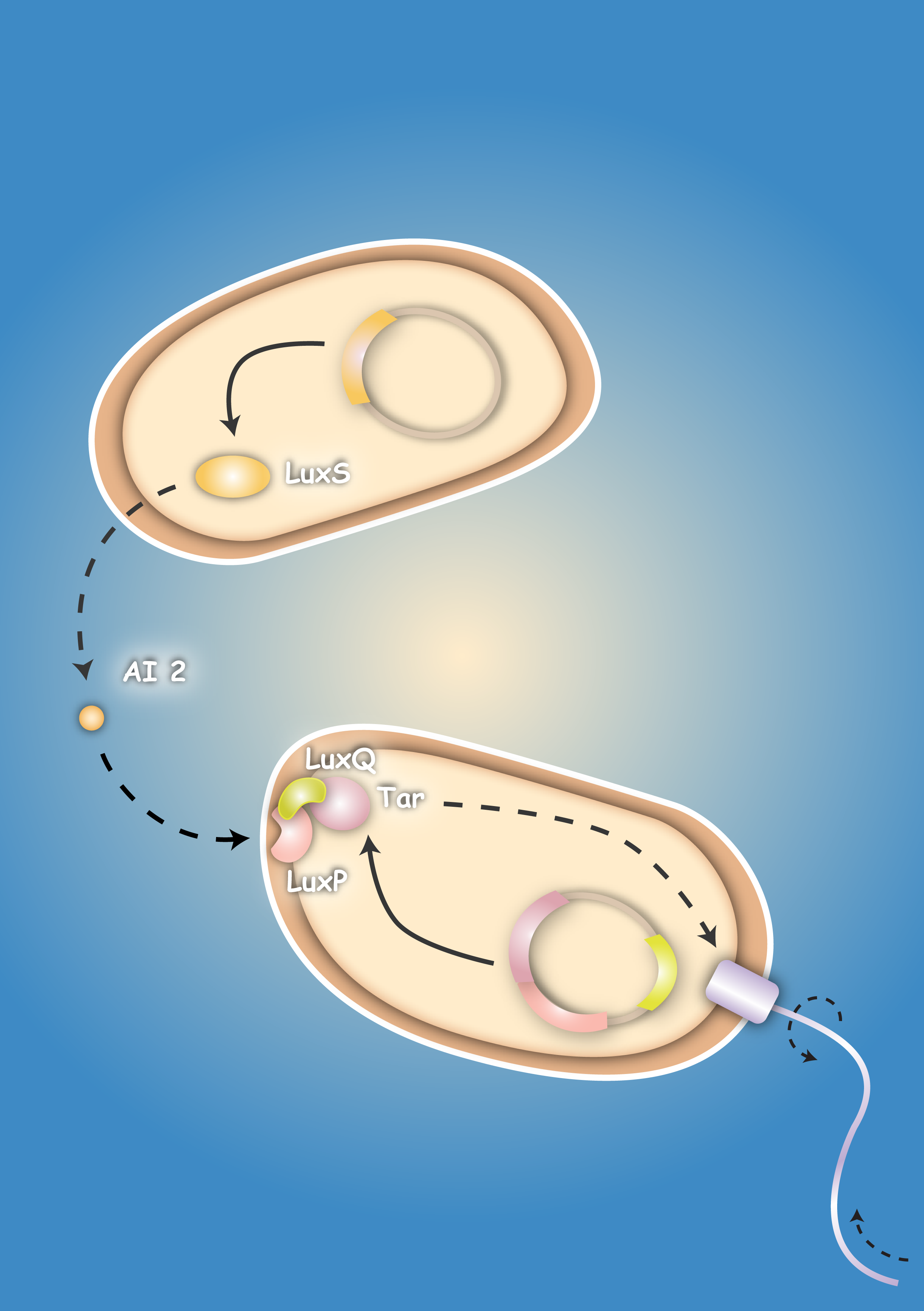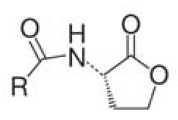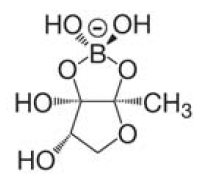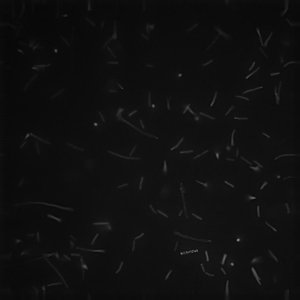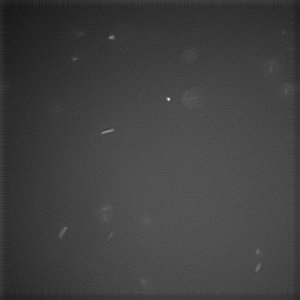Team:Heidelberg/Project/Sensing
From 2008.igem.org
(→Discussion) |
(→Results) |
||
| Line 497: | Line 497: | ||
=== Results === | === Results === | ||
| - | We successfully cloned both chimeric constructs, F1 and F1, into our expression plasmid pDK48 in HCB33 or pBAD33 in UU1250 strain. In addition to our chimeric receptor sequence this plasmid encoded also LuxP, the protein which is essential for AI-2 binding of the LuxQ receptor. In order to verify the expression of the chimeric receptor proteins and to control the correct localization of the receptor molecules in our prey cells, we transfomed DH5α cells with the chimera constructs fused to the yellow fluorescent protein YFP. Expression of this construct was verified by a detectable fluorecence signal in the transformed cells. However, when tested in swarm assays the transformed bacteria showed no chemotactic activity. This was observed for both the UU1250 strain and the HCB33 strain. That the chimeric receptors did not show any chemotactic activity was further confirmed by polarisation tests. Therefore we coexpressed the unlabeled receptors in UU1250 cells together with YFP-CheA. The CheA fusion was thereby expected to localize to the cytoplasmic part of the receptors and subsequently fluorescent signals should be visible at the cell membrane. Nevertheless, no membrane localization of fluorescence was detected. The reason for this is not clear, but probably the cytoplasmic domain of the receptor was not able to bind YFP-CheA properly or the receptor did not localize to the membrane. and kinase-activity tests were done, but also showed no positive result. [[https://2008.igem.org/Team:Heidelberg/Project/Sensing back]] | + | We successfully cloned both chimeric constructs, F1 and F1, into our expression plasmid pDK48 in HCB33 or pBAD33 in UU1250 strain. In addition to our chimeric receptor sequence this plasmid encoded also LuxP, the protein which is essential for AI-2 binding of the LuxQ receptor. In order to verify the expression of the chimeric receptor proteins and to control the correct localization of the receptor molecules in our prey cells, we transfomed DH5α cells with the chimera constructs fused to the yellow fluorescent protein YFP. Expression of this construct was verified by a detectable fluorecence signal in the transformed cells. However, when tested in swarm assays the transformed bacteria showed no chemotactic activity. This was observed for both the UU1250 strain and the HCB33 strain. That the chimeric receptors did not show any chemotactic activity was further confirmed by polarisation tests. Therefore we coexpressed the unlabeled receptors in UU1250 cells together with YFP-CheA. The CheA fusion was thereby expected to localize to the cytoplasmic part of the receptors and subsequently fluorescent signals should be visible at the cell membrane [Bourret, 1993]Morrison & Parkinson. Nevertheless, no membrane localization of fluorescence was detected. The reason for this is not clear, but probably the cytoplasmic domain of the receptor was not able to bind YFP-CheA properly or the receptor did not localize to the membrane. and kinase-activity tests were done, but also showed no positive result. [[https://2008.igem.org/Team:Heidelberg/Project/Sensing back]] |
[[Image:HD Fusion1-YFP.jpg|left|thumb|300px|'''Fig. 5''': Fluorescence Image of Fusion1-YFP]] [[Image:HD Fusion2-YFP.jpg|left|thumb|300px|'''Fig. 6''': Fluorescence Image of Fusion2-YFP]] | [[Image:HD Fusion1-YFP.jpg|left|thumb|300px|'''Fig. 5''': Fluorescence Image of Fusion1-YFP]] [[Image:HD Fusion2-YFP.jpg|left|thumb|300px|'''Fig. 6''': Fluorescence Image of Fusion2-YFP]] | ||
Revision as of 20:48, 28 October 2008


Contents |
Project - Sensing
Abstract
Bacteria have the ability to sense gradients of chemoeffectors in their environment by specific receptor molecules which are present in the bacteria membrane. Our aim was to make use of bacterial chemotaxis in order to generate a "killer" strain which is able to detect and finally kill a "prey" strain by chemotaxis induced movement towards it. For this purpose we cloned the LuxS gene of Vibrio harveyi in an expression plasmid. LuxS encodes the Autoinducer-2 synthase, an enzyme that is essential for the production of the chemoattractant Autoinducer-2 (AI-2). We wanted to transform the "prey" cells with this expression plasmid in order to establish a concentration gradient of AI-2, which can be sensed by the "killer" strain. To make the "killer" strain sensitive towards AI-2, we generated two different chimeric receptors consisting each of the periplasmic ligand-binding domain of LuxQ, the natural receptor for AI-2, and the cytoplasmic part of the chemotaxis receptor (Tar). To allow proper folding and signal transduction we included either the second transmembrane domain of the LuxQ receptor or the Tar receptor in the chimeric receptor sequence. In addition to the chimeric receptor sequence we wanted to co-express from the same plasmid also LuxP, a cofactor which is essential for AI-2 ligand binding of the LuxQ receptor. We were successful in the cloning of all constructs mentioned above. The chimeric receptors were expressed in transformed bacteria as controlled by receptor fusions to the yellow fluorescent protein YFP. To our surprise none of the chimeric receptor constructs showed a polarized localization as expected for chemotaxis receptors. We were also not able to detect chemotactic activity in the transformed bacteria. Future experiments with sequence optimized receptor fusions will have to show if AI-2 is able to induce Tar-based chemotaxis. [back]
Introduction
The main component of the sensing system is chemotaxis to make the killer strain swim towards the prey cells. Chemotaxis of E. coli is one of the best studied systems for signal transduction. [Sourjik, 2004]. It is a classical two component system which usually contains membrane-bound receptors for detecting the gradient of a repellent or attractant, and an intracellular kinase which transfers the signal from the receptor to the end reactor – the flagella- the motion machine in the bacteria. Signal transduction is performed by phosphorylation of diffusible regulator proteins [Sourjik, 2004]. Quorum sensing is used in bacteria for cell-cell communication. Small diffusible molecules, called Autoinducers, are secreted and can be detected by other bacteria in order to sense cell density [Waters & Bassler, 2005]. Through the quorum-sensing system bacteria can synchronize certain behaviour [Waters & Bassler, 2005] and act as multicellular organisms [Vendeville, 2005]. Here, we have combined these two components. The quorum-sensing molecule, Autoinducer-2 (AI-2), serves as a chemoattractant, which can be detected by LuxQ. To make the killer cells sensitive to AI-2, a fusion receptor of LuxQ and the chemotactic receptor Tar has been generated. Details on the cloning strategy can be found on a separate page. [back]
Chemotaxis
Bacteria sense chemical gradients in their environment and are able to swim towards higher concentrations of chemoattractants or avoid repellents [Sourjik, 2004]. The chemical molecules are detected by specific transmembrane receptors and after a series of signal transduction events subsequently transduced to the flagella, the bacterial motor [Wadhams, 2004]. Most abundant receptors are Tar and Tsr [Sourjik, 2004]. Binding of an attractant results in counterclockwise (CCW) rotation of the flagellar and smooth swimming, while a repellent mediates clockwise rotation and tumbling of the bacteria [Sourjik, 2004]. The key player in signal transduction is CheA, a histidine kinase. Together with the adaptor protein CheW, CheA binds to the cytoplasmic domain of the chemotactic receptor. Its autophosphorylation activity is enhanced by repellents and inhibited by chemoattractants. CheA phosphorylates downstream CheY, which then diffuses to the flagellar and mediates a change in rotation from counterclockwise to clockwise and thus promotes tumbling of the cell. The phosphorylated form of CheY (CheY-P) is rapidly dephosphorylated by CheZ, which is necessary for quick re-adjustment of behavior [Sourjik, 2004]. [back]
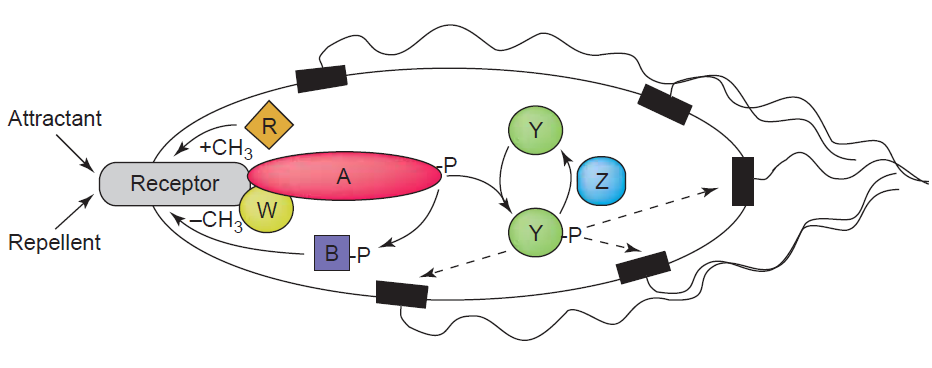
The aspartate receptor Tar, which is used in this project as chemotaxis receptor, is a 60 kDa protein with about 2500 copies per cell. The smallest units of the receptor are dimers, but the major species in the membrane are tetramers. There is no evidence that Tar can form heterodimers with other methyl-accepting chemotaxis protein (MCP). The receptor has a very high helical content of about 80 %. The N-terminal cytoplasmic segment is very small (residues 1-6) and can be altered greatly without affecting the function very much [Mowbray, 1998]. The periplasmic region (residues 31-188) is responsible for ligand binding. In this part the sequence is very little conserved, allowing the binding of various chemoeffectors [Mowbray, 1998]. In the absence of a ligand the periplasmic part forms a symmetric dimer, with each subunit consisting of an antiparallel four-helix bundle. Two transmembrane regions are flanking the periplasmic domain: residues 7-30 (TM1) and residues 189-212 (TM2). Both transmembrane segments have a clear helix pattern. The cytoplasmic region (residued 213-553), which is responsible for signal transduction, has a size of about 37 kDa. It is the most conserved part, with sequence identity of ~70 % between Tar and Tsr. Residues 213-259 are referred to as the linker region and its integrity is crucially important for receptor function [Mowbray, 1998]. [back]
Quorum-Sensing
There are two major signaling molecules in the quorum-sensing system, Autoinducer-1 (AI-1) and Autoinducer-2 (AI-2). AI-1 is a acyl-homoserine lactone (Fig. 2), AI- 2 a furanosyl-borate-diester (Fig. 3) [Sun, 2004]. AI-1 is responsible for the intraspecies communication, i.e., interaction within one species. On the contrary AI-2 shared by both the gram-negative and gram-positive bacteria, is a language for cross talking between the different bacteria species (interspecies). Since its wide distribution among the bacteria, AI 2 is the ideal signal to be detected [DeKeersmaecker, 2006].
LuxQ is a transmembrane receptor with a structure similar to that of Tar. It is part of the quorum-sensing system of Vibrio harveyi. LuxQ binds the complex of LuxP and AI-2. AI-2 is synthetized by LuxS synthase, an enzyme which is 159 amino acids in length and has a molecular weight of 17.6 kDa. LuxP is 365 amino acids long and has a molecular weight of 41 kDa. Its signal sequence is proteolytically removed upon translocation into the periplasm, yielding mature LuxP. LuxQ is 594 amino acids long with a molecular weight of 67 kDa. Similar to Tar, it has two transmembrane domains flanking the periplasmic domain (residues 39-280). The cytoplasmic domain (residues 299-859) is responsible for signal transduction, and not important for the chemotaxis fusion receptor [Neiditch, 2005].
[back]
Results
We successfully cloned both chimeric constructs, F1 and F1, into our expression plasmid pDK48 in HCB33 or pBAD33 in UU1250 strain. In addition to our chimeric receptor sequence this plasmid encoded also LuxP, the protein which is essential for AI-2 binding of the LuxQ receptor. In order to verify the expression of the chimeric receptor proteins and to control the correct localization of the receptor molecules in our prey cells, we transfomed DH5α cells with the chimera constructs fused to the yellow fluorescent protein YFP. Expression of this construct was verified by a detectable fluorecence signal in the transformed cells. However, when tested in swarm assays the transformed bacteria showed no chemotactic activity. This was observed for both the UU1250 strain and the HCB33 strain. That the chimeric receptors did not show any chemotactic activity was further confirmed by polarisation tests. Therefore we coexpressed the unlabeled receptors in UU1250 cells together with YFP-CheA. The CheA fusion was thereby expected to localize to the cytoplasmic part of the receptors and subsequently fluorescent signals should be visible at the cell membrane [Bourret, 1993]Morrison & Parkinson. Nevertheless, no membrane localization of fluorescence was detected. The reason for this is not clear, but probably the cytoplasmic domain of the receptor was not able to bind YFP-CheA properly or the receptor did not localize to the membrane. and kinase-activity tests were done, but also showed no positive result. [back]
Discussion
Our aim was to generate a new chemotactic receptor chimera consisting of parts of the LuxQ receptor and the well studied Tar receptor. This kind of receptor would allow bacteria to sense gradients of the autoinducer molecule AI-2 and swim towards the gradient due to the Tar receptor part. In order to allow the correct folding and activation of the tar receptor in the cytoplasm we included either the second transmembrane domain of the LuxQ receptor or the Tar receptor. We could conclude from our expression tests in different bacteria that both chimeric receptors were expressed from the transformed plasmids. Nevertheless none of the chimeras showed a polarization at one pole of the bacteria cells. This finding was confirmed by our swarm assays where the transformed bacteria did not show any chemotactic movement towards the source of AI-2 while control bacteria did. We can only speculate that our chimeric receptor is not correctly inserted and located within the bacteria membrane due to the presence of the periplasmic domain of LuxQ. We plan to insert flexible linker sequences of different sizes between the LuxQ sensing domain and the Tar receptor transmembrane part, which would allow a correct folding of the receptor molecules. If we are thereby able to ensure the proper localization of the chimeric receptor molecules, the next step would be to mutate the linker region of the Tar receptor randomly in order to optimize its signal transduction properties. [back]
References
[Waters & Bassler, 2005] Christopher M. Waters, and Bonnie L. Bassler: Quorum Sensing: Cell-to-Cell Communication in Bacteria, Annu. Rev. Cell Dev. Biol. 21, 319–346, 2005
[Sourjik, 2004] Victor Sourjik: Receptor clustering and signal processing in E. coli chemotaxis, Trends in Microbiology 12(12), 569–576, December 2004
[Vendeville, 2005] Agnes Vendeville, Klaus Winzer, Karin Heurlier, Christoph M. Tang, and Kim R. Hardie: Making sense of metabolism: Autoinducer-2, LuxS and pathogenic bacteria, Nature Reviews 3, 383–396, 2005
[Wadhams, 2004] George H. Wadhams, and Judith P. Armitage: Making Sense of it all: bacterial chemotaxis, Molecular Cell Biology 5, 1024–1037, December 2004
[Mowbray, 1998] Sherry L. Mowbray, and Mats O. J. Sandgren: Chemotaxis Receptors: A progress report on structure and function, Journal of Structural Biology 124, 257–275, 1998
[DeKeersmaecker, 2006] Sigrid C. J. De Keersmaecker, Kathleen Sonck, and Jos Vanderleyden: Let LuxS speak up in AI-2 signaling, Trends in Microbiology 14(3), 114–119, 2006
[Sun, 2004] Jibin Sun, Rolf Daniel, Irene Wagner-Döbler, and An-Ping Zeng: Is autoinducer-2 a universal signal for interspecies communication: a comparative genomic and phylogenetic analysis of the synthesis and signal transduction pathways, BMC Evolutionary Biology 4(36), 2004
[Neiditch, 2005] Matthew B. Neiditch, Michael J. Federle, Stephan T. Miller, Bonnie L. Bassler, and Frederick M. Hughson: Regulation of LuxPQ Receptor Activity by the Quorum-Sensing Signal Autoinducer-2, Molecular Cell 18, 507–518, May 2005
[Bourret, 1993] R B Bourret, J Davagnino, and M I Simon: The carboxy-terminal portion of the CheA kinase mediates regulation of autophosphorylation by transducer and CheW, Journal of Bacteriology 175, 2097–2101, 1993
[Morrison & Parkinson] TB Morrison, and JS Parkinson: A fragment liberated from the Escherichia coli CheA kinase that blocks stimulatory, but not inhibitory, chemoreceptor signaling, Journal of Bacteriology 179, 5543–5550, 1997 [back]
 "
"
